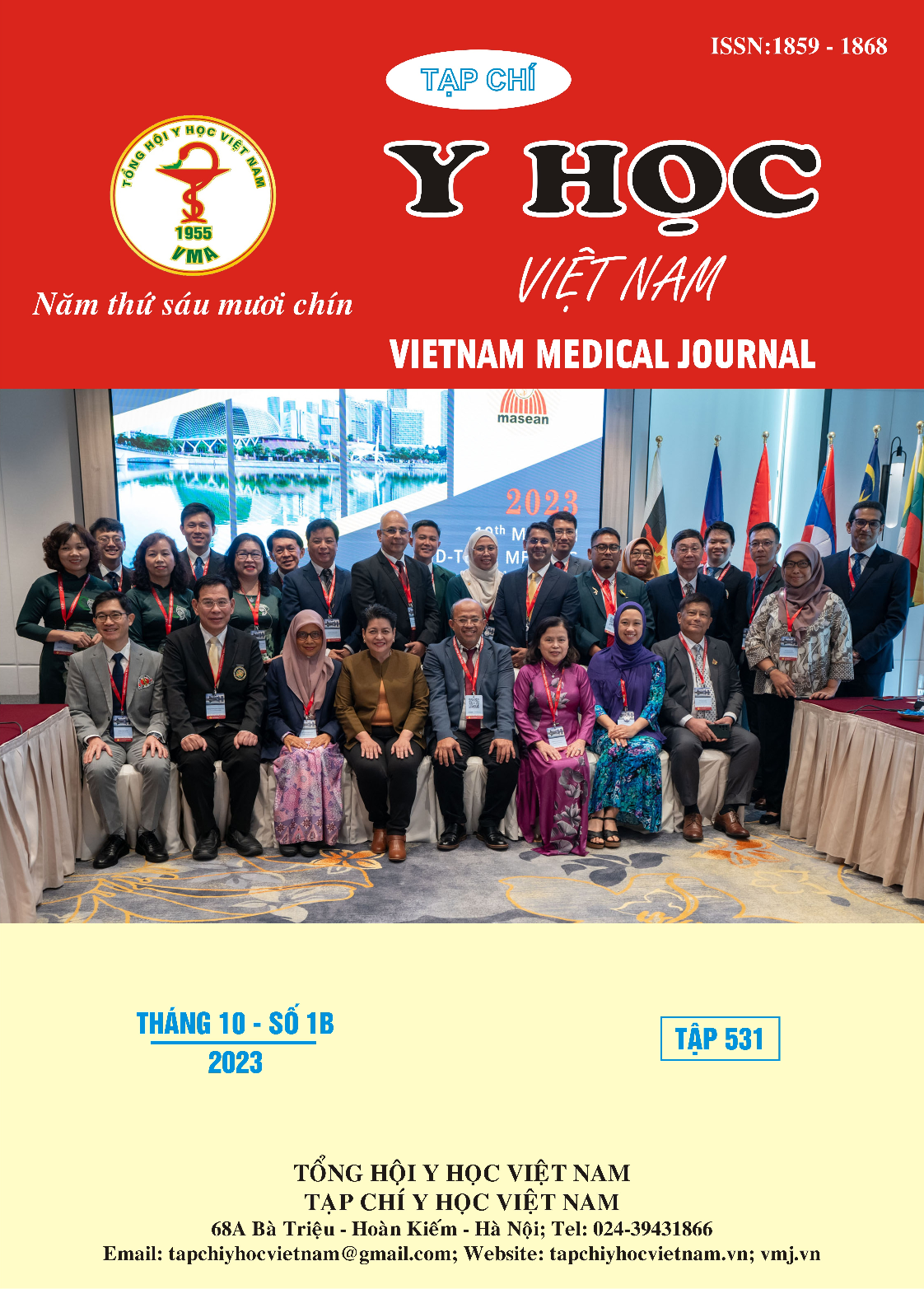VALUE OF SUCCESSFUL PREDICTING SCALES OF HUMIDIFIERED HIGH FLOW NASAL CANULA ON ACUTE EXACERBATION OF CHRONIC OBSTRUCTIVE PULMONARY DISEASE AFTER EXTUBATION
Main Article Content
Abstract
Objectives: to evaluate several successful predicting scales when applying humidified high flow nasal canula after extubation in patients with acute exacerbation of chronic obstructive pulmonary disease. Method: A prospective interventional study, all patients eligible for the study was chosen. The patient was applied HFNC immediately after extubation. Clinical indicators and blood gases after extubation were collected. Success of HFNC defined as the patient did not require reintubation or noninvasive ventilation within 48 hours of extubation. The study was conducted from May 2022 to June 2023 at the Center for Critical Care Medicine - Bach Mai Hospital. Results: There were 31 patients participating in the study. In which, there were 28 male patients (90.3%), 3 female patients (9.7%). The mean age was 70.58±9.319 years old, the oldest was 84 years old, the youngest was 49 years old. Most common comorbidities were hypertension (25.8%) and heart failure (22.8%). The success rate was 77.42%. The predictive value of success when applying the HFNC system based on the ROX scale at the time of T0.5 had a cutoff point of 11.49 with a sensitivity of 66.7% and a specificity of 71.4%. In addition, the HACOR scale at the time of T0.5 had a cutoff of 2.5 with a sensitivity of 57.1% and a specificity of 83.3%. Conclusions: ROX and HACOR scale have predicting value when applying the HFNC system on patients with COPD exacerbations after extubation.
Article Details
Keywords
Extubation, humidified high-flow oxygen, HFNC, COPD, ROX, HACOR
References
2. Nguyễn Đạt Anh và CS. Những vấn đề cơ bản trong thông khí nhân tạo. Nhà xuất bản y học; 2009.
3. Mè Thị Xuân. Nghiên cứu áp dụng thử nghiệm thôi thở máy 2 phút trước rút ống nội khí quản ở bệnh nhân cấp cứu được thông khí nhân tạo xâm nhập. 2014. Published online 2014.
4. Ni YN, Luo J, Yu H, et al. Can high-flow nasal cannula reduce the rate of reintubation in adult patients after extubation? A meta-analysis. BMC Pulm Med. 2017;17(1):142. doi:10.1186/s12890-017-0491-6
5. Xia M, Li W, Yao J, et al. A postoperative comparison of high-flow nasal cannula therapy and conventional oxygen therapy for esophageal cancer patients. Annals of Palliative Medicine. 2021;10(3):2530539-2532539. doi:10.21037/apm-20-1539
6. Đào Thị Hương, Đỗ Ngọc Sơn. Nghiên cứu áp dụng hệ thống thở oxy lưu lượng cao ở bệnh nhân có nguy cơ phải đặt lại nội khí quản sau rút ống. Luận văn y học; 2017.
7. Tan D, Walline JH, Ling B, et al. High-flow nasal cannula oxygen therapy versus non-invasive ventilation for chronic obstructive pulmonary disease patients after extubation: a multicenter, randomized controlled trial. Crit Care. 2020; 24(1):489. doi:10.1186/s13054-020-03214-9
8. Hernández G, Paredes I, Moran F, et al. Effect of postextubation noninvasive ventilation with active humidification vs high-flow nasal cannula on reintubation in patients at very high risk for extubation failure: a randomized trial. Intensive Care Med. 2022;48(12):1751-1759. doi:10.1007/s00134-022-06919-3
9. Liu T, Zhao Q, Shi Z, Du B. [Effect of high-flow nasal cannula oxygen on patients with chronic obstructive pulmonary disease and mild hypercapnia: a retrospective cohort study based on the Medical Information Mart for Intensive Care-IV database]. Zhonghua Wei Zhong Bing Ji Jiu Yi Xue. 2021;33(6):686-691. doi:10.3760/ cma.j.cn121430-20210219-00258
10. Valencia CF, Lucero OD, Castro OC, Sanko AA, Olejua PA. Comparison of ROX and HACOR scales to predict high-flow nasal cannula failure in patients with SARS-CoV-2 pneumonia. Sci Rep. 2021;11:22559. doi:10.1038/s41598-021-02078-5


